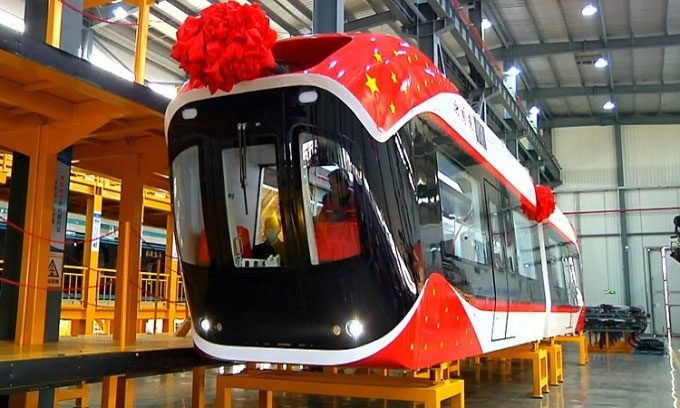China Set to Test Passenger Maglev Train on Elevated Monorail at Speeds Up to 120 km/h

Xingguo maglev train rolls off the assembly line in Wuhan in December 2021. (Photo: China News)
The world’s first maglev train designed for an elevated monorail, named “Xingguo”, is undergoing final adjustments in Gan Zhou, Jiangxi Province, and is expected to complete test runs by July. Xingguo integrates two modern transportation technologies: maglev (magnetic levitation) and monorail.
The monorail resembles traditional railways but is inverted. China is the third country in the world, after Germany and Japan, to master this technology, according to Wang Zhongmei, head of the engineering department at the China Railway Science and Industry Corporation (CRSIC), one of the project’s participants. “Not only does the monorail occupy less land, but it also does not interfere with pedestrians or vehicles. This type of railway has an independent route and costs only one-fifth of a subway system,” Wang stated.
Xingguo is the first train in the world to apply maglev technology on an elevated monorail. “Current monorails use electricity to propel wheels on the tracks,” said Yang Bin, a secretary at Jiangxi University of Science and Technology. “Xingguo is a type of maglev vehicle operating on a single rail.”
Xingguo maglev train operates on an 800-meter elevated monorail at a speed of 80 km/h. Unlike superconducting maglev trains and conventional electric maglev trains, this new technology can lift the train without the need for electric conduction. Xingguo employs non-contact propulsion. The permanent magnet technology allows the vehicle to save energy and protect the environment. This is an unmanned train, with carriages moving along an elevated rail supported by steel and concrete pillars. The train has a capacity of 88 passengers and a maximum speed of 120 km/h.
This innovative technology is not only applicable in urban areas but also in mountainous regions and desert environments, potentially supporting subway systems and urban rail networks.




















































